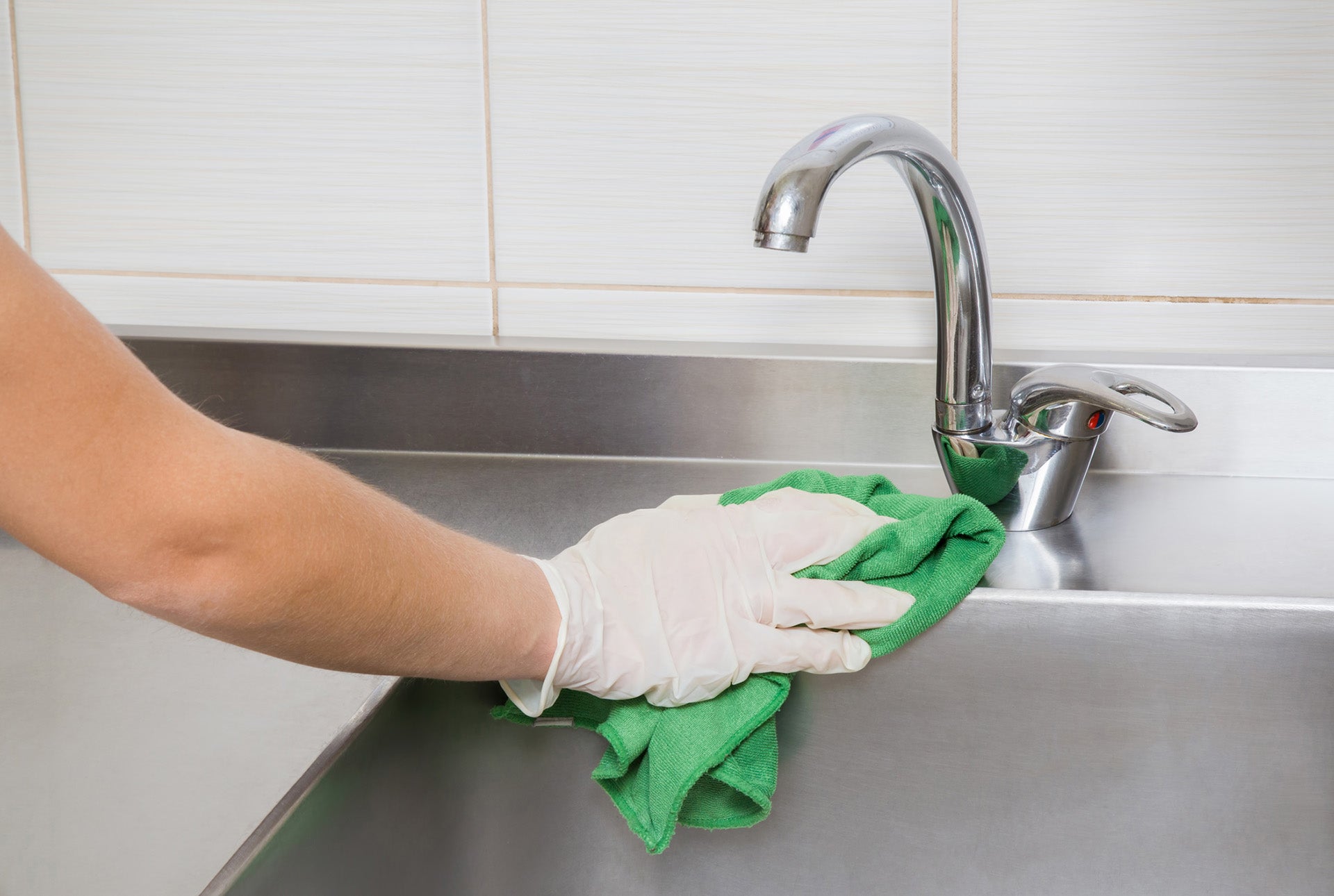Colour coded cleaning was first introduced in the United Kingdom during the 1990s when the British Institute of Cleaning Science (BICSc) began to universalise a colour coding system for the commercial cleaning industry. Originally based on hospital cleaning practices, a colour coded cleaning system focuses on separating equipment by colour to maintain hygiene and reduce the risk of cross-contamination.
Although this system was intended for use in the commercial cleaning industries, colour coding is beginning to become a common practice in office spaces, food service businesses and even home or personal settings. Understanding why this practice is important within a business is integral to the health and safety of staff and customers, who rely on the business to maintain certain standards in cleanliness.
What is Colour-Coded Cleaning and Why is it Important?
Colour-coded cleaning is a system where different areas of a facility, office or hospital are separated by colour based on how high or low risk they are in relation to bacteria or germ infection. This means that equipment like mops, squeegees and disinfectants are separated by colour to ensure no high-risk tool or chemical will be used – and potentially spread germs to – on another area.
Colour-coded cleaning is an infection control strategy put in place to lower the risks of cross contamination when cleaning high risk areas like washrooms and toilets. It allows professional cleaners to stop the spread of harmful germs from high-risk areas to low-risk ones.
Now that we understand what colour-coded cleaning is, we can explore why it is important to segregate spaces. The simplest way to explore this is by acknowledging that we wouldn’t want the same sponges we use to clean dishes to be the ones used to clean our toilet seats or urinals. This is especially important because bacteria transferred between these two spaces (washroom and kitchens) can result in extreme food-borne illnesses. In Australia there are more than 4.1 million cases of food-borne illnesses like food poisoning every year. Of these cases over 31,000 people are hospitalised.
A study conducted by BioLabTests, investigated how germs were spread from bathrooms into office areas. The study concluded that 80% of bacteria is transported through our hands and that items such as computer mice, keyboards and door handles had the highest number of bacterial colonies present. Some bacteria found on these items were different kinds of staphylococcal species which commonly live on a person’s skin. When these species are spread, they can cause fever, nausea and vomiting. The study concluded that better cleaning was to be conducted in offices and that using different cleaning products from washrooms to office desks will prevent the spread of these bacteria.
Cleaning equipment and even protection gear like mop buckets, wringers, aprons and cleaning cloths can harbour and spread germs when not properly cleaned after use. Bacteria need wet moist environments to live so if you are not regularly cleaning and drying your mop, you may be contaminating clean areas with every use. Having a structured approach to cleaning, like colour-coding, will ensure germs that may be living in your cleaning tools isn’t spreading to other areas in your facilities or offices where they can do more damage.
Implementing a colour-coded system for your facilities will also be beneficial to you and your staff as it will protect them against infection, lowering absenteeism rates. In Australia, workers take on average 9.7 days of sick leave annually. If staff are getting sick because of cross-contamination in the workplace, it will likely cost your business annually $3,608 per worker who calls in sick. Having this standard of cleaning is an inexpensive way to protect your staff and patrons against infections.
Colour-Coding Schemes for Commercial Cleaning
Every organisation can ultimately choose how they want to create their colour coded cleaning system, however, the BICSc have created a system with the goal of universalising their code across the world of commercial cleaning. Using this system will be the best option for your business as there are already so many resources surrounding the colour-coding created by BICSc. Their scheme looks like this:
- Yellow for areas of potential infection like hospitals or other medical facilities.
- Red is used for areas that present a high risk of contamination such as toilets or bathrooms. This is where a lot of cross contamination can occur as washrooms can result in a lot of bacteria being spread like E. Coli, Salmonella and Staphylococcus Aureus.
- Green is utilised in kitchens and food preparation areas. It is important to separate the cleaning in kitchens from other areas as kitchens commonly have and spread various bacteria such as E. Coli, Salmonella, Campylobacter, norovirus and many more.
- Blue is used for low-risk areas that are generally used by individuals like desk areas and office spaces.
- White cleaning equipment is commonly used for operating theatres and clinical areas within healthcare facilities or hospitals.
Benefits of Colour-Coded Cleaning
Using this colour-coded scheme within your businesses will be a great option in maintaining cross contamination as there are so many resources available for staff training and education. As BICSc have universalised this system, it is easy to train staff or recruit staff who may already be using this scheme.
You can also keep your current equipment even if it does not fit into this scheme. This can be done using coloured labels or dots to make the transition into colour-coded cleaning affordable and easy.
If you are wanting to convert to a colour-coded system for your cleaning and worried about how difficult it will be to find supplies to match, any easy place to start is with your cleaning cloths and wipes.
Kwikmaster’s Versatile Wipes are available in four different colours, red, blue, yellow and green, and are the perfect solution to colour-coding and preventing cross contamination. These cloths are strong and absorbent and antibacterial, ideal for commercial cleaning.
Kwikmaster’s All Purpose Flat Pack Cleaning Wipes are a perfect solution for cleaning disinfecting and sanitising areas. They are available in a range of colours and are anti-bacterial, making these a solution to colour-coding your cleaning.






